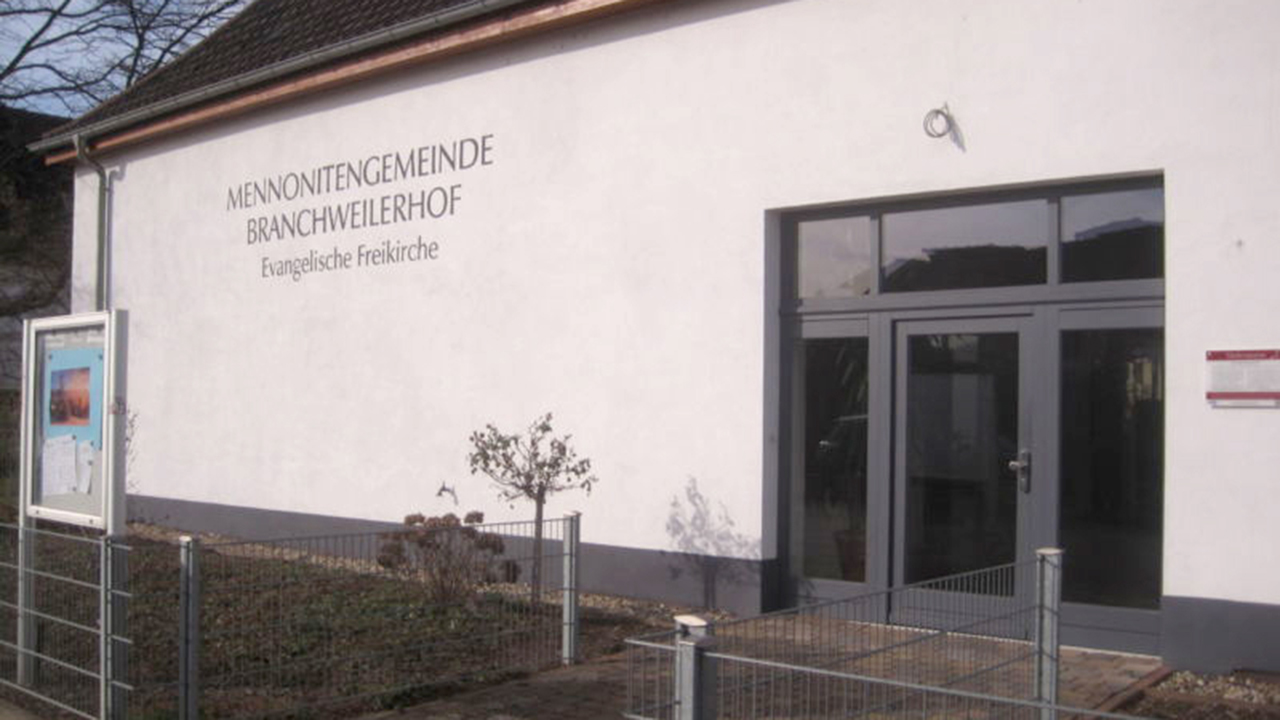In an era of division and splits impacting churches and conferences around the world, unification is coming to two congregations in southwest Germany.
Two of the Mennonite and Mennonite Brethren churches in Neustadt are in the process of forming one new congregation after starting to hold joint worship services in September 2024. It is the first merger of its kind.
Evangelische Freikirche Mennonitische Brüdergemeinde (Evangelical Free Church Mennonite Brethren Church) belongs to the AMBD Mennonite Brethren conference, while Mennonitengemeinde Branchweilerhof (Mennonite Church of Branchweilerhof) is a member of the relatively progressive AMG.
Pastors Klaus Schuster and Udo Adams, who responded jointly to questions, said the transition process has been fluid after it was determined that more collaboration between the two small congregations of about 30 members each would open more opportunities.
“We want to be a new congregation with shared goals,” they said. “The ‘new’ congregation will have a new name, which has not yet been decided.”
Similarly, no determination has been made about affiliation with AMBD or AMG, though the pastors stressed the new church is Mennonite, even if they don’t know yet whether “Mennonite” will be in the new name. Services take place at Branchweilerhof to provide more stability than moving back and forth.
The two denominations have some geographic overlap, and the Neustadt congregations are not strangers, sitting less than two miles apart in the community of roughly 53,000 people.
“As early as the 1960s, both congregations had a joint youth group, as well as occasional joint services and pulpit exchanges,” said Schuster and Adams. “The contacts and collaboration have continued to this day and have intensified considerably in recent years.
“We want to join forces because we are two small congregations. The motivation was primarily practical.”
While mergers are unprecedented, AMG/AMBD collaboration increased after a service of reconciliation took place between the two denominations in 2010.
AMG has offered AMBD guest membership for several years and reserves space in its annual report booklet for an AMBD contribution. The conferences also partner through supporting Mennonite Central Committee’s work.
“A few years ago, we also visited each other at denominational gatherings,” said AMG board chair Doris Hege. “Then the chairmen changed. The relationship with the new ones is no longer there, and the mutual visits have also died down.
“We meet at the European level, but even then, the ‘old’ leaders from the Mennonite Brethren attend because the current ones didn’t have time.”
Last year’s AMG national gathering was held at AMBD’s Evangelical Free Church of the Mennonite Brethren in Neuwied, when an ecumenical joint worship service took place. Former AMBD leader Walter Jakobeit, a member of the congregation, said the original AMG venue was converted into a shelter for Ukrainian refugees at the last minute.
“Since our congregation has a sufficiently large meeting room and many additional adjoining rooms, the [AMG] congregation on Pommernstrasse, which hosted the event, approached us,” he said. “We maintain loose but friendly ties with this congregation. Our shared goal was to bring us closer together as congregations through this event, to create new contacts and thus to break down prejudices. This goal was certainly achieved by the event!”
Broader cooperation may be more elusive. Jakobeit acknowledged Neustadt and Neuwied are the communities with closest proximity. Proximity of theology can also bring complications.
“As we got to know each other, we realized that closer cooperation would have led to many discussions on topics that would have likely led to new barriers,” he said. “For example, women as preachers, homosexuality, mission, ecumenism, etc.”
Theological questions have not been a problem yet in Neustadt.
“Sometimes the more practical aspects of organizing worship services are a greater challenge,” said Adams and Schuster, who reported all members support the merger and no one has left. “It’s more about the form than the content. . . . The style and design of worship are already 90% similar, so the services are almost ‘as usual.’ . . .
“The theological interpretations are not and have not always been consistent, even within each congregation. We try to take everyone seriously and have always found common ground in a loving relationship.”

